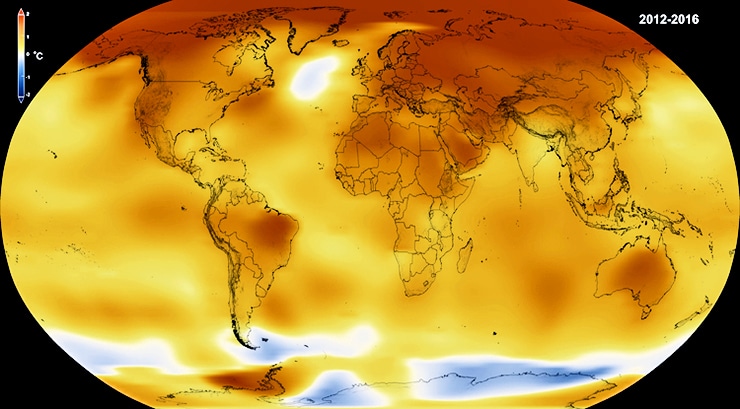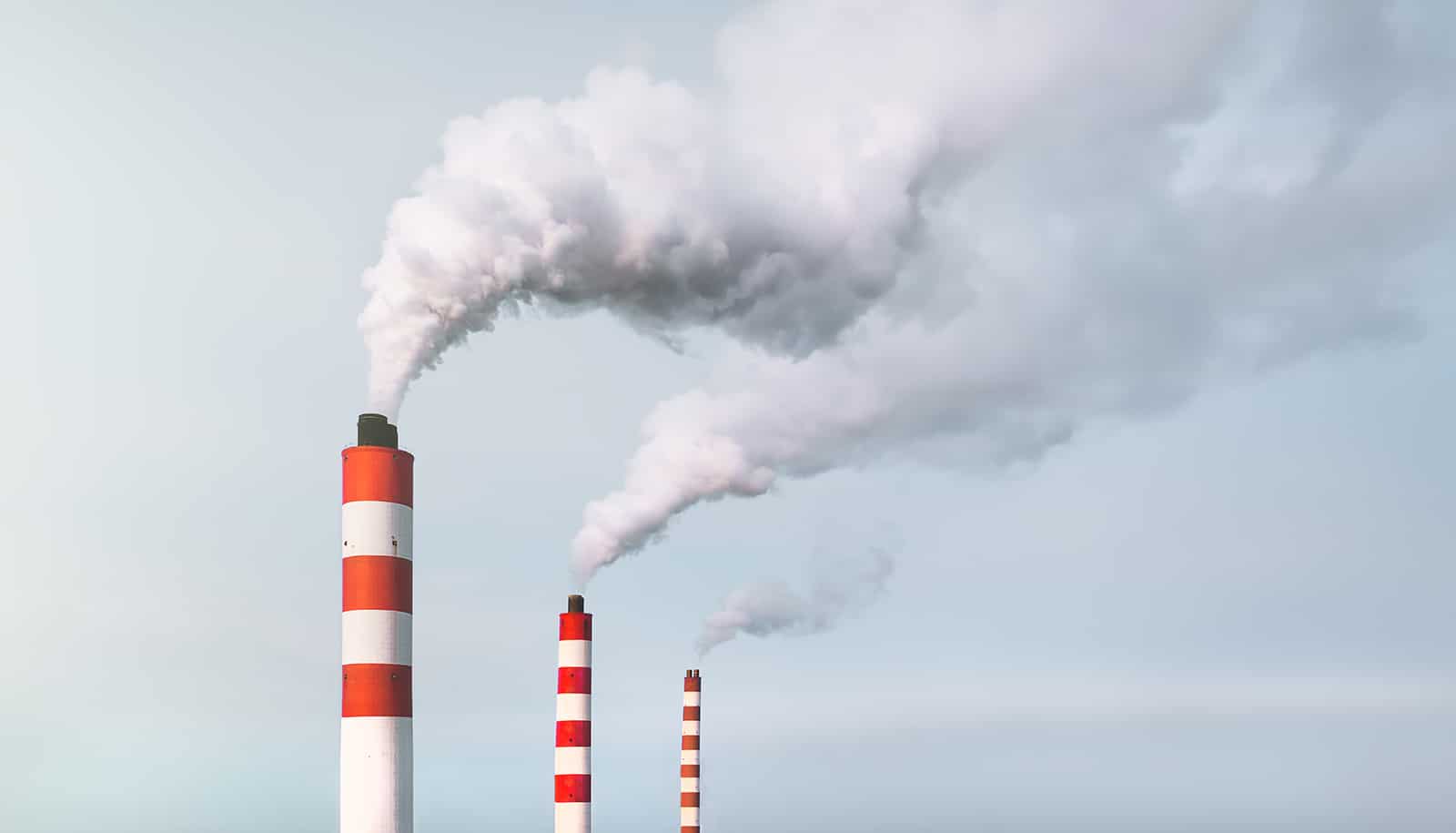Global surface temperatures surged by a record amount from 2014 to 2016, researchers report.
The surge boosted the total amount of warming since the start of the last century by more than 25 percent in just three years, according to a new paper describing the research.
“Our paper is the first one to actually quantify this jump and identify the fundamental reason for this jump,” says lead author Jianjun Yin, an associate professor of geosciences at the University of Arizona.

The Earth’s average surface temperature climbed about 1.6 degrees F (0.9 C) from 1900 to 2013.
By analyzing global temperature records, Yin and his colleagues found that by the end of 2016, the global surface temperature had climbed an additional 0.43 degrees F (0.24 C).
“As a climate scientist, it was just remarkable to think that the atmosphere of the planet could warm that much that fast,” says coauthor Jonathan Overpeck.
El Niño’s impact
The spike in warming from 2014 to 2016 coincided with extreme weather events worldwide, including heat waves, droughts, floods, extensive melting of polar ice, and global coral bleaching.
The new research shows that natural variability in the climate system is not sufficient to explain the 2014-2016 temperature increase, says coauthor Cheryl Peyser, a doctoral candidate in geosciences at UA.
In the current paper, the researchers also project how frequent such big temperature spikes would be under four different greenhouse emission scenarios. Record-breaking temperature jumps and the accompanying extreme weather events will become more frequent unless greenhouse gas emissions decline, the team found.
Figuring out the mechanism for the temperature spike built on previous work by Peyser, Yin, and others.
The world is on track for one of the higher emission scenarios, Peyser says.
The earlier work showed that although the Earth’s surface warming had slowed from 1998 to 2013, heat from additional atmospheric greenhouse gases was being sequestered in the Pacific Ocean. The strong 2015-2016 El Niño roiled the ocean and released all the stored heat, causing a big jump in the Earth’s surface temperatures.
“Our research shows global warming is accelerating,” Yin says.
In early 2017, Yin and Overpeck were having lunch and Yin mentioned how fast the globe was warming.
Overpeck says, “I knew it was warming a lot, but I was surprised at how much it warmed and surprised at his insight into the probable mechanism.”
The two scientists began brainstorming about expanding on Peyser’s and Yin’s previous work.
The researchers analyzed observations of global mean surface temperatures from 1850 to 2016, ocean heat content from 1955 to 2016, sea level records from 1948 to 2016 and records of the El Niño climate cycle and a longer climate cycle called the Pacific Decadal Oscillation—15 different datasets in all.
The analysis showed the 0.43 F (0.24 C) global temperature increase from 2014 to 2016 was unprecedented in the 20th and 21st centuries.
Extra emissions
Although some release of heat from the Pacific Ocean is normal during an El Niño, the researchers found much of the heat released in 2014-2015 was due to additional warming from increases in the amount of greenhouse gases in the atmosphere.
Yin says, “The result indicates the fundamental cause of the large record-breaking events of global temperature was greenhouse-gas forcing rather than internal climate variability alone.”
Global warming is already changing genes
The researchers also projected how often a 0.43 F (0.24 C) global temperature increase might occur in the 21st century depending on the amount of greenhouse gases emitted worldwide between now and 2100. The team used four representative concentration pathway, or RCP, models that project future climate change between 2006 and 2100.
For the low-emission RCP scenario in which greenhouse gas emissions peak by 2020 and decline thereafter, temperature jumps of at least 0.43 F (0.24 C) might occur from zero to one time in the 21st century, the team found.
For the highest-emission RCP scenario in which greenhouse gas emissions rise unabated throughout the 21st century, spikes of record warm temperatures would occur three to nine times by 2100. Under this scenario, such events would likely be warmer and longer than the 2014-2016 spike and have more severe impact.
The world is on track for one of the higher emission scenarios, Peyser says.
Adapting to the increases in the frequency, magnitude, and duration of rapid warming events projected by the higher emission scenario will be difficult, the scientists write.
Yin says, “If we can reduce greenhouse gas emissions, we can reduce the number of large record-breaking events in the 21st century—and also we can reduce the risk.”
Sea levels rose in bursts during past global warming
The research paper, by Yin, Overpeck, Peyser, and geosciences instructor Ronald Stouffer, appears in the journal Geophysical Research Letters. Overpeck is dean of the School for Environment and Sustainability at the University of Michigan, Ann Arbor.
The Visiting Scientist Program of Princeton University, the National Oceanic and Atmospheric Administration, and the National Science Foundation funded the research.
Source: University of Arizona



